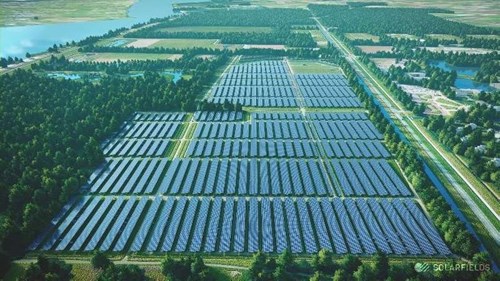
Green and sustainable parking solutions have long been a topic of conversation within the parking industry.
With almost every development requiring a parking option, parking lots have become a dominant landscape feature. Aside from aesthetics, parking facilities also influence the quality of the environment – no one wants to look at a big grey tower night and day, feel like they are in danger or be forced to cope with additional pollution. With known issues associated with traditional parking lots such as the urban heat island effect, polluted air and storm water run-off issues, it’s time to redefine our priorities when it comes to parking.

Many cities are now turning to Park & Ride options with charges levied against cars coming to the inner city. This balances out distortion between transportation choices, whereby people lean more towards their cars than public transport due to the favoured door to door option. We’ve recently seen P&R developments in Spain and the Netherlands amongst other countries. Retrofit smart parking solutions have increased in popularity, and some have played a big factor in transforming congestion zones. Both examples above are directly related with cities and the need to, mainly, keep traffic flowing within them. So, what happens if we look purely at how a car parking facility is made greener and more sustainable?

During the construction phase of the parking facility, it is possible to utilise recycled or repurposed materials sourced locally. Utilisation of local labour also increases sustainability, especially if this can be continued into the operational stages. Promotion of recycling for both employees and visitors can lend to a greener facility, as well as sharing parking beyond single users. An efficient parking facility will contribute to a better experience both for users and those in the proximity of the facility. Provision of alternative fuel vehicle peripherals, such as EV chargers, in parking facilities can also reduce fossil fuel consumption and emissions. Only recently domestic courier and delivery services giants UPS invested in UK-based electric vehicle pioneer Arrival, and subsequently ordered 10,000 electric delivery vehicles, showing how popular alternative fuel transportation is.
As for the design of the parking facility itself, a literally greener construction can include the use of living or green walls to reduce the urban heat island effect, reduce smog, provide natural sound-proofing and clean both the internal and external air space. Living walls also provide a nicer aesthetic for those nearby. An easy retrofit for generation of clean power, shade provision and a generally cooler surface could be to place solar panels over parking facilities.
The largest solar carport in the world will be created at the Lowlands Festival car park in Biddinghuizen, the Netherlands, with work commencing in Q4 this year. All energy generated by the carport will be provided to the general electricity network. The project is being financed by Solarfields and 90,000 solar panels will deliver a capacity of 35 MWp, which is estimated to be enough to supply around 10,000 households. At present, the festival is looking to see how they can also tap into the energy source, as the solar carport will be a permanent fixture at the Lowlands car park.

2019 was the year where climate change awareness was brought to the forefront, especially with the younger generation and the combined influential effect of social media. Given the ever-increasing number of green and sustainable solutions that are currently available in parking, it will be interesting to see what other innovations come to fruition over the course of 2020 and whether the climate change movement will continue at the same pace.



